The Nintendo Advanced Video System
The Commodore 64 took the computer into American homes nationwide. It launched in 1982 and would go on to sell upwards of 17 million units during its lifespan. Over the course of its run 10,000 different software programs would be designed to run on the system. Nintendo, who watched as the video game crash of 1983 sunk Atari as a viable leader in home gaming, noted this success. This opened the door for Nintendo to try and capture a market share that had netted upwards of 3.2 billion dollars in revenue in 1983 before collapsing under the weight of competition and market over saturation.
Atari had tried unsuccessfully to expand their 2600 console for home computing use as the programs offered were rather bare bones compared to a home PC’s potential. Atari would add a keyboard to as a home video console accessories as well.
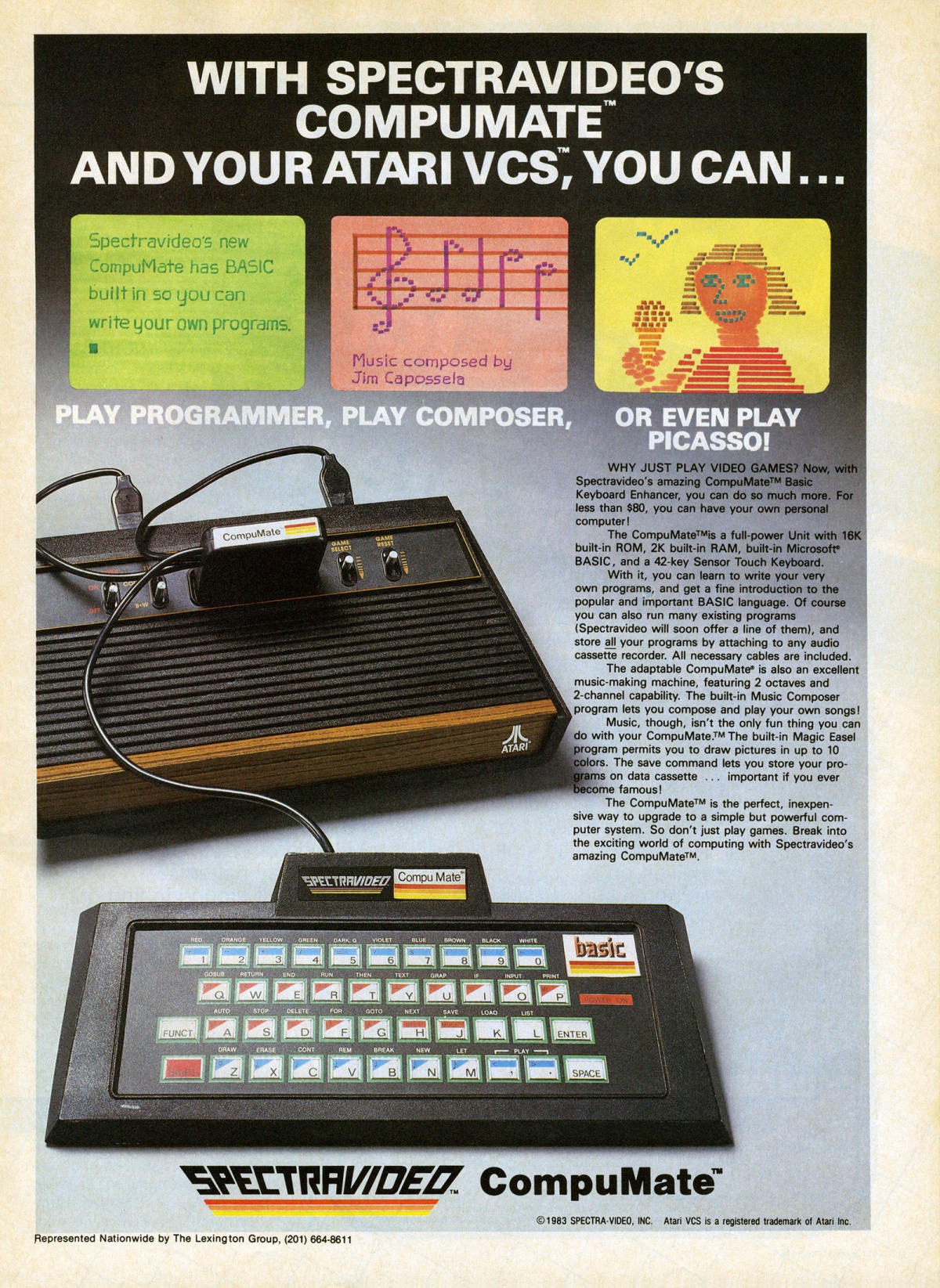
Photo courtesy atarimania.com
Nintendo decided that in order to make a serious dent in the home console world they would have to offer a unit that could compare to home PC abilities while also offering many other options including a tape deck, electronic instruments and wireless controllers being part the standard fare, not an expensive additional perk.
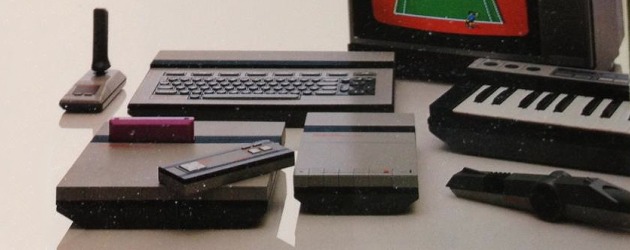
Photo courtesy killerraptorsfromouterspace.weebly.com
A prototype of this ambitious console was developed but the public only was given one chance to glimpse it. That opportunity came at the 1985 Consumer Electronics Show. Further testing would prove that the wireless IR technology wasn’t performing consistently at an acceptable level and that the units many devices made for a potentially too expensive final product. With fears that they would sink in the red on manufacturing a pricey dud of a console, Nintendo streamed things way back and decided to push what we now know as the Nintendo Entertainment System as its main product, which was a near clone of Japan’s Famicom system.
The NES was revealed in June of 1985 and released in time for the Christmas shopping season that same year. Of course Nintendo scored a major hit and 62 million NES consoles would be sold over the next 9 years. Nintendo still has a display model of the Nintendo Home Video System located at their “Nintendo World Store” in New York City.
Rez Trance Vibrator

Rez is a bad acid trip disguised as a rail shooter. The sound effects that you would typically associate with shoot’em up games have been replaced with electronic music, which changes based on how the player defeats enemies as they play the game.
Japanese video game developers ended up creating an add on for this game known as the “Rez Trance Vibrator” and offered it to the public (with a winking notion) as a playing enhancement. The idea was “officially” for the user to put it on their foot, back, or perhaps waist and feel the pulsations sync with the game play. Of course nearly everyone who bought this thing used it for masturbation. Allegedly.
The vibrator’s creators were kind enough to make sure this add on was durable enough to be washed. I just hope those who used this item enjoyed it as much as their parents took pleasure in seeing a cowboy have sexual congress with an Indian’s squaw in Atari’s “Custer’s Revenge” twenty years earlier.
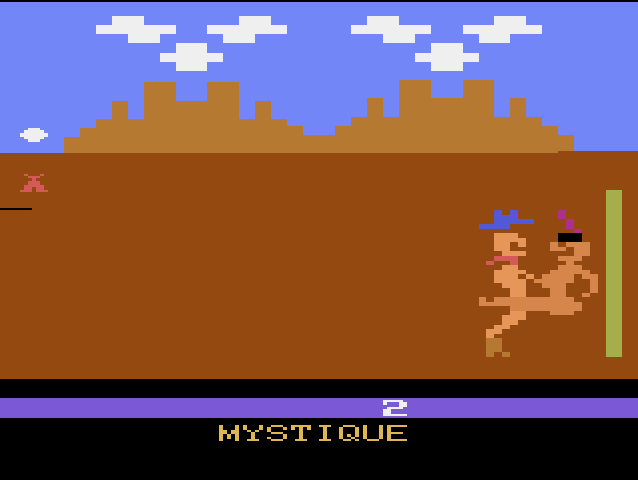
Photo courtesy retrogramereview.files.wordpress.com
The Sega Channel
Downloaded content is a common feature found in most games today. The Playstation network, Xbox Live and Virtual Console allow you to find and play a plethora of past favorites for a reasonable price. However back in the pre-internet gaming era, your best bet for affordable gaming variety was to have neighborhood kids with the same console and a friendly demeanor trade games with you.
Sega attempted an early version of the modern set up though when they introduced the Sega Channel. A special adapter was secured into the game slot of your Genesis and then the other end hooked up to your in home cable wiring which allowed you access to around fifty games that would be rotated monthly. Sega put a stop to this experimental service in 1997.
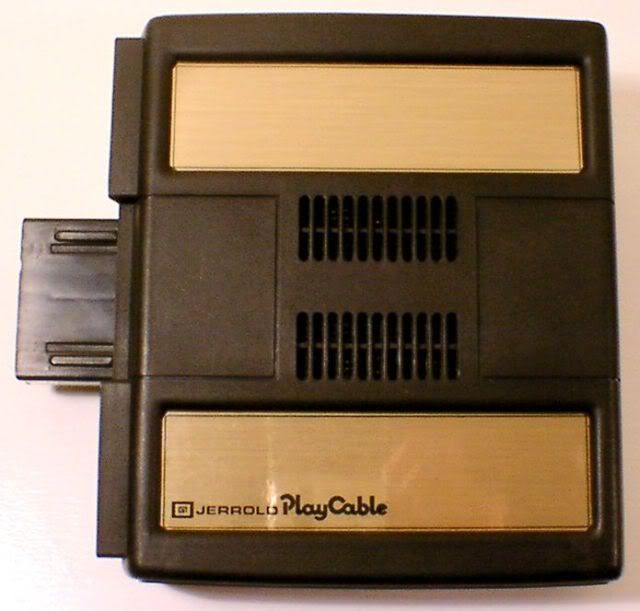
Intellivision PlayCable Adapter
Incredibly, way back in 1981 Intellivision console owners in some test markets were able to retrieve games through an adapter that went from the system to the cable line. The service lasted less than two years and went by the wayside during the video game crash of 1983.
The Sega Game Gear TV Tuner
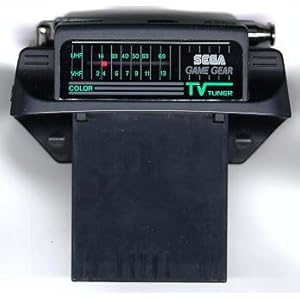
The Nintendo Game Boy handheld video game system debuted in 1989 and was a smashing success for years despite suffering from a black and white (green? grey?) presentation and limited graphic capabilities. It is a testament to the strength of quality game play and the public’s love of Nintendo games like the Mario Bros, Castlevania, Metroid, The Legend of Zelda and so on that the handheld went on to dominate the market for many years. The Game Boy would ultimately sell 120 million console units during its long shelf life.
Sega rushed the Game Gear to market in 1991 as it’s version of a handheld console. The Game Gear offered a color display as it’s main selling point although it was ahead of the Game Boy in many other important technical aspects – minus battery life. Sega did little to nurture the systems growth however as they focused on creating the Sega 32X and other such devices rather than devote focus on the handheld. This ended up playing a part in it selling “only” 11 million units and losing the handheld wars.
-1496117496.jpg)

Sega did offer one unique item to try and push the Game Gear past the Game Boy and that was a mini-TV tuner that could be connected to the system. It even had a jack for a cable line to be utilized. Perhaps Sega should have considered getting into the eye-wear business, given what staring at the small Game Gear screen would do to your pupils after a few hours.
Soldier Pad

I have to give a quick shout out to the Soldier Pad, perhaps the oddest and most uncomfortable looking controller ever designed. Specially made for arcade style fighting games in the wake of the Street Fighter games becoming an early-mid 90’s rage. My wrist hurts just looking at this thing, although some reviews I looked at heavily praised it.
The Quickshot Trackball

Photo courtesy 8bitnes.com
A version of this controller was developed for the Commodore 64, Atari computer and the NES. Since a third party licensee made it, the NES proved to be a poor fit for using the rolling motion ball instead of a traditional d-pad controller since Nintendo wasn’t designing games with this peripheral in mind. The only NES game that users found any use for this with was Marble Madness, for which it proved to be a natural fit.
The Gameboy Booster

Photo courtesy atariage.com
The Gameboy was designed to be a compact portable console for easy play anywhere that could comfortably fit in your hands and perhaps a pocket when not in use. Somebody completely missed the point when they developed the Gameboy Booster, a monstrosity that you were to place your Game Boy inside of. The Booster would then enclose around it and allow you to use a fold down magnifying glass for the screen and a control panel that you pressed on, which would then press the buttons on the system trapped within. The Booster also had extra storage space for additional games on its backside. What you were left with was then a bulky object you had to lay on a table to “comfortably” use. The Booster required batteries to power the light it had attached to it and the little joystick was well known for breaking from even general use. A total waste for anyone who owned it.
Mamma Mia Pisanos! After shifting through all these odd ball items I think I need to go cleanse my palette with some Donkey Kong Country, maybe a little Mario Kart… ah who am I kidding, I’m heading to Ebay to find me a copy of that Rez game…
Part One: http://culturecrossfire.com/gaming/rare-wacky-and-unusual-video-game-accessories

